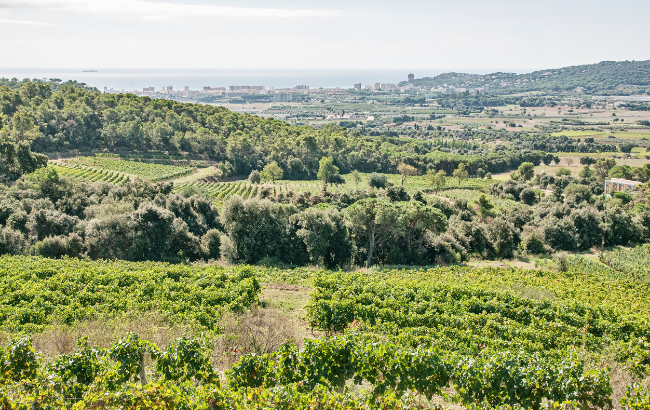Can smoke-tainted grapes have an afterlife?
By Sarah NeishA new study is exploring whether there could be a silver lining for wine growers struck by smoke-taint, with trials underway to distil the affected grapes into deliberately smoky spirits.

A new Australian study is investigating whether spoiled grapes can be used to make deliberately smoky-flavoured brandy, or even gin.
The research, carried out by the University of Adelaide, could bring hope to countless winegrowers around the world who have seen their vineyards devastated by wildfires this year.
“Hopefully we can roll out a smoke-flavoured brandy or gin in about 12 months’ time,” said Simon Tolley of Adelaide Hills winery Simon Tolley Wines in South Australia, which is taking part in the trials. “The project will hopefully assist other smoke-affected growers in the future, and also give them more options with the rejected wine fruit rather than just putting it on the ground.”
The study is being carried out in tandem with an investigation by the same university on the impacts of climate change on brandy production in Australia.
“Due to the time it takes to produce and mature spirits, combined with 2020 COVID-19 delays it’s still too early for any results, though the experimentally produced spirits are maturing slowly away in the university’s winery,” said Hugh Holds of the University of Adelaide. “This should give us an impression of how the spirit will develop as a fully matured product.”
Removing the effects of smoke-taint, which is often described as giving an unpleasant ashy or chemical-like taste, from wine is possible through a process of activated carbon fining, however this can also remove some of the wine’s better characteristics.
Partner Content
As part of the project, researchers are also looking into whether purposefully smoky-flavoured brandy or gin would go down well with consumers.
It comes on the back of a previous study, also led by the University of Adelaide, which found that activated carbon fabric could help stop smoke from affecting grapes in the first instance.
Grapes were enclosed in a bag made from the fabric, which appeared to significantly reduce evidence of smoke exposure.
“Every single time, consistently, we’re seeing only 1 or 2 per cent of the concentration of these smoke compounds in the grapes or in the wine where the fruit’s been protected in these activated-carbon bags, compared to where the grapes have just been exposed to smoke,” Professor Kerry Wilkinson of University of Adelaide told ABC Rural.
The scale of damage during Australia’s 2019-2020 fire season was unprecedented, causing an estimated AU$665 million worth of production and revenue loss. The nation’s Pinot Noir, in particular, suffered the most from the effects of smoke taint.
“The bushfires that we saw ahead of the 2020 vintage were devastating in the regions that were directly impacted,” said Wine Australia CEO Andreas Clark last year.
“Fire is part of the Australian landscape but what we saw last year was different due to the timing and duration of smoke exposure. This challenged our knowledge of smoke impacts and led to several new research projects.”
Related news
Trump tariff explainer: the main takeaways
The Big Interview: Stephen Henschke
Everything you wanted to know about the Australian beer industry




